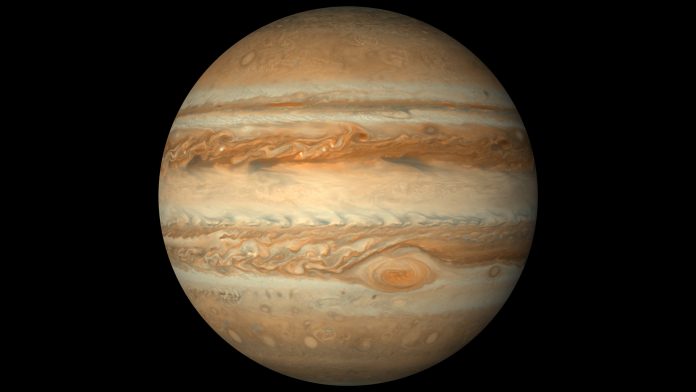Researchers have identified a bright flash, detected by the Juno space probe above Jupiter’s clouds, as a bolide, an extremely bright meteoroid explosion in the gas giant’s upper atmosphere.
Since the Juno space probe arrived at Jupiter in 2016, Southwest Research Institute’s Ultraviolet Spectrograph (UVS) team have studied the morphology, brightness, and spectral characteristics of Jupiter’s auroras as the spacecraft travels close to its surface every 53 days.
SwRI’s Dr Rohini Giles, lead author of a paper outlining these findings in Geophysical Research Letters, said: “Jupiter undergoes a huge number of impacts per year, much more than the Earth, so impacts themselves are not rare. However, they are so short-lived that it is relatively unusual to see them. Only larger impacts can be seen from Earth, and you have to be lucky to be pointing a telescope at Jupiter at exactly the right time. In the last decade, amateur astronomers have managed to capture six impacts on Jupiter.
“This observation is from a tiny snapshot in time – Juno is a spinning spacecraft, and our instrument observed that point on the planet for just 17 milliseconds, and we don’t know what happened to the bright flash outside of that time frame. But we do know that we didn’t see it on an earlier spin or a later spin, so it must have been pretty short-lived.”
UVS has previously observed a set of 11 bright transient flashes that lasted one to two milliseconds. They were identified as Transient Luminous Events (TLEs), an upper atmospheric phenomenon triggered by lightning. The team initially thought this recent bright flash might be a TLE, however, it was different in two key ways. While it was also short-lived, it lasted at least 17 milliseconds, much longer than a TLE. It also had very different spectral characteristics. Spectra of TLEs and auroras feature emissions of molecular hydrogen, the main component of Jupiter’s atmosphere. This bolide event had a smooth ‘blackbody’ curve, which is what is expected from a meteor.
Giles explained: “The flash duration and spectral shape match up well with what we expect from an impact. This bright flash stood out in the data, as it had very different spectral characteristics than the UV emissions from Jupiter’s auroras. From the UV spectrum, we can see that the emission came from blackbody with a temperature of 9600 Kelvin, located at an altitude of 140 miles above the planet’s cloud tops. By looking at the brightness of the bright flash, we estimate that it was caused by an impactor with a mass of 550-3,300 pounds.”









